
The Garden's Reason for Being
Approaching the site from the north on Somerset Street, visitors are greeted with McKee’s Ibis Ascending, rising high above their heads from behind a curving granite wall that announces the garden’s reason for being. The sculpture’s prominent location on the street foreshadows what will be the memorial’s concluding message—one of hope. Thus even passersby who do not venture into the garden might feel some inspiration from within it.
Image: Susannah Ross
Telling the Story
Approaching from the south, visitors may enter the garden through a secondary gateway, which is flanked with granite piers that tell the story behind the lush, sculptural, textured landscape that can be glimpsed beyond.
Image: Susannah Ross
Visitors' Senses Are Heightened
From outside the garden, the designer’s careful use of texture can be seen at once. From the curling bark of the river birch in the foreground to the frothy bed of Liriope encircling the riverbed, from the gleaming, reflective surface of “Tragic Density” contrasted with the rough, muted stones representing those lost, the visitor’s senses are heightened and the experience intensified by careful choice of landscape materials.
Image: Susannah Ross
A Preview of the Final Message: Hope
The meandering course of the riverbed folds back on itself, so that the visitor previews from over the heavy initial moment of the polished granite sphere, the lighter, inspiring concluding message of the birds taking flight.
Image: Susannah Ross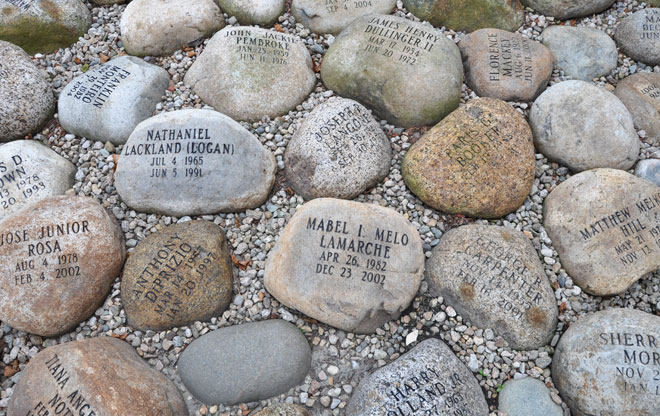
Tragic Ends Etched in Stone
Victims honored in the garden died as long ago as 1946, and as recently as May 2012. Some names—like John Fitzgerald Kennedy, and his brother Robert, will be familiar to all who visit. Others may be recognizable only to a few, or to anyone who has heard the tragic Boston headlines over the years. The inscription of each name in the same size text onto a similar sized river stone helps convey that young or old, famous or not, all of the victims lives’ were important and shared a tragic end.
Image: Susannah Ross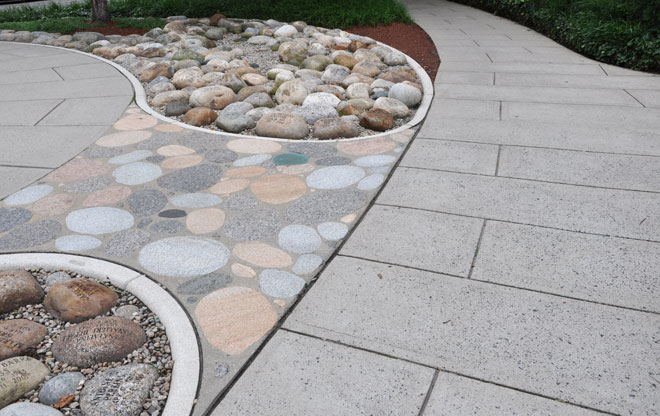
The Flow of the River Remains Unbroken
The cascade of etched stones of many colors, oriented in all different directions, further conveys a sense of helplessness—that each victim was carried away in a current of violence that impacts far too many. With the cut stone pass-through midway down the course, the designer allows the flow of the river to remain unbroken and yet permits visitors to view stones on both sides up close without ever having to step upon any of the names honored.
Image: Susannah Ross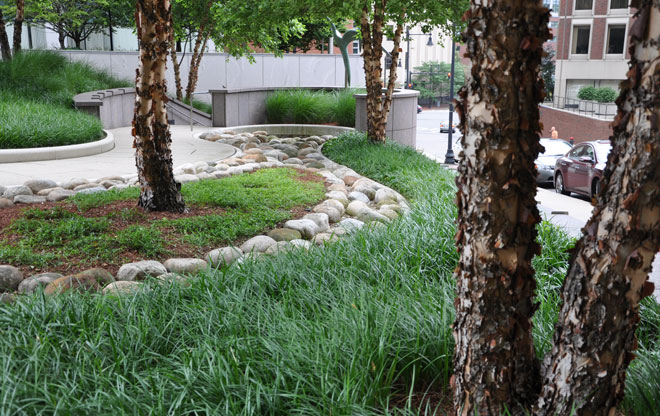
The Sinuous Flow of Stones
Planting and etched stones wind back and forth together in liquid waves, conveying a sense of flow without introduction of actual water to the riverbed. A granite basin appears to catch the sinuous flow of stones below and in return release the triumphant birds to the sky above.
Image: Susannah Ross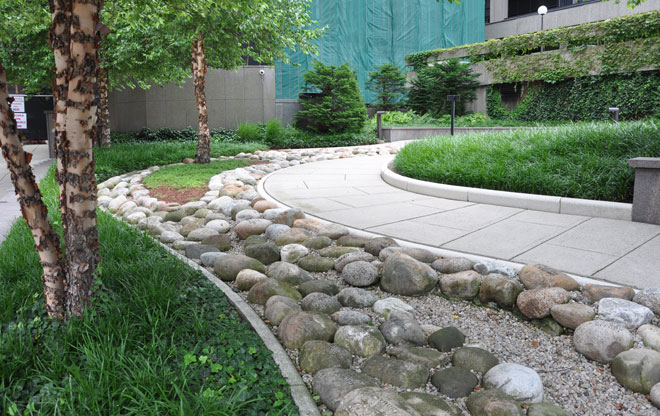
The Path Traveled
A view from the basin back upstream allows the visitor to reflect on the path travelled.
Image: Susannah Ross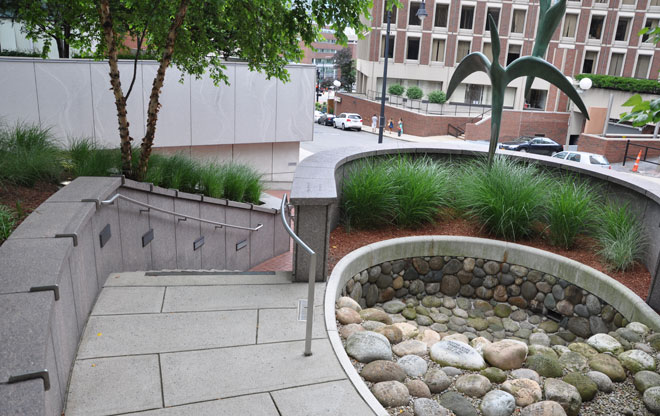
The Basin
At the terminus of the dry riverbed, the designer intended the basin to be filled with a cascade of water, from which the birds would arise. Ongoing technical problems near the site have prevented that vision from being realized, though it is anticipated that the planned flow of water will finally come to pass in the fall of 2013. As the basin releases the birds to the sky, so does the granite stairwell release visitors back out onto the sidewalk below.
Image: Susannah Ross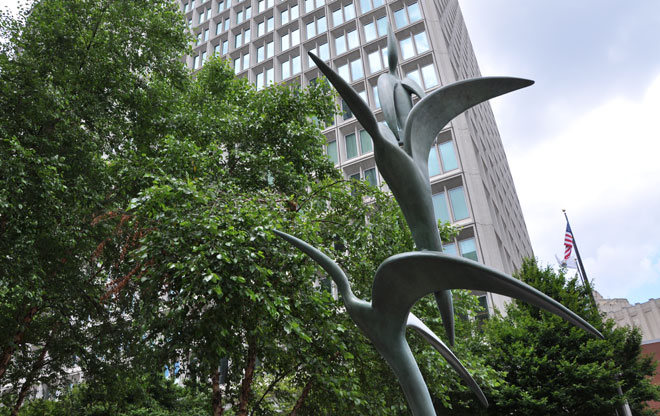
A Sense of Release
A last glimpse of Ibis Ascending conveys a sense of release from the weight of grief—not that the process ever ends, but that strength and hope can still arise from it.
Image: Susannah Ross